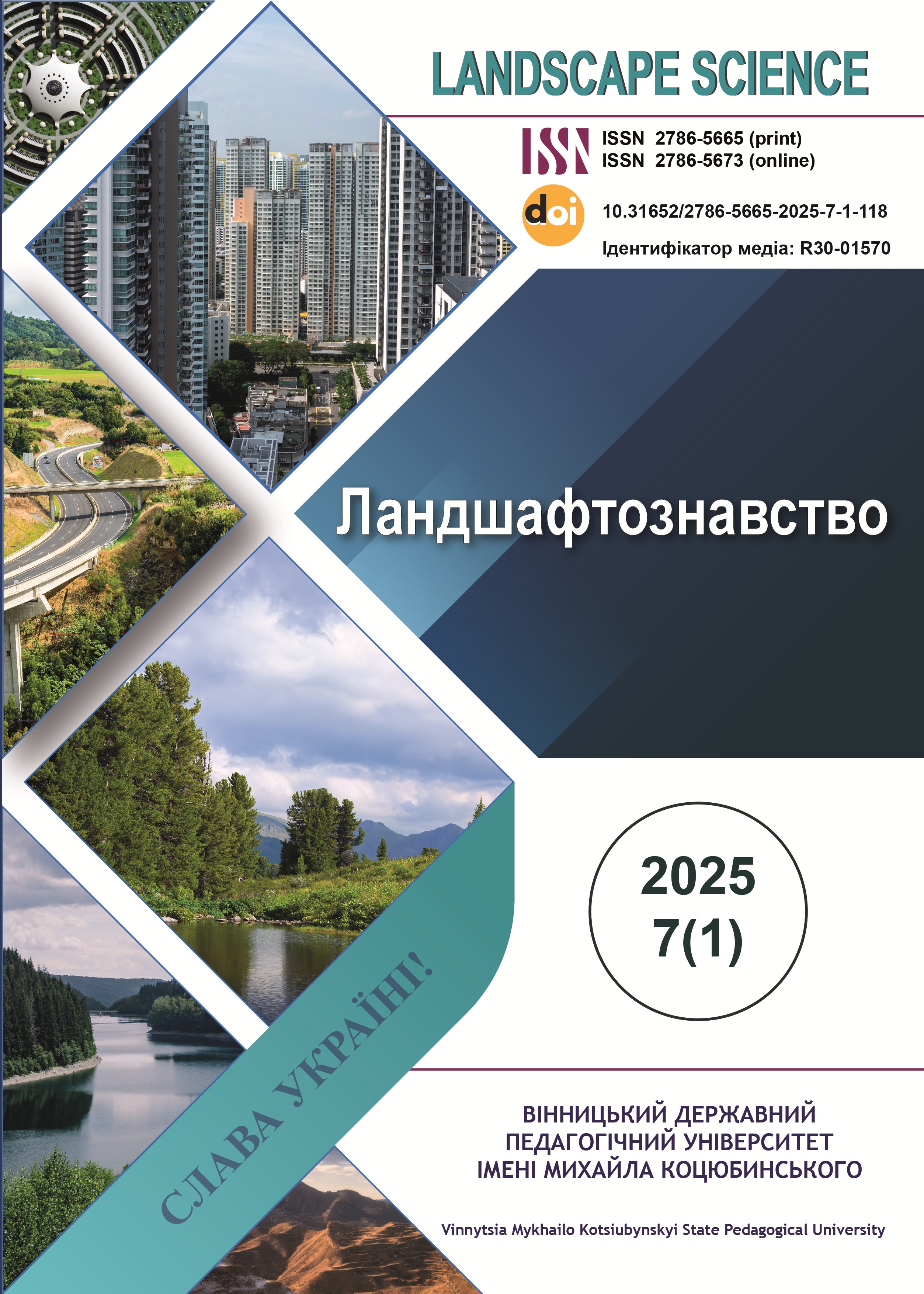Abstract
Artificial intelligence (AI) has emerged as a powerful tool in contemporary geographical research, offering innovative approaches to the analysis, visualization, and interpretation of landscapes. This article explores the role of AI in the study of garden and park landscapes, with a particular focus on AI-generated imagery and data analysis as valuable resources for geographical, anthropogenic-landscape, and ecological research. Through selected case studies, we demonstrate how AI technologies can enhance traditional methodologies and deepen our understanding of the structure, function, and dynamics of both natural and human-made landscapes – especially cultural landscapes shaped through established landscape-engineering systems. The article addresses the underexplored role of artificial intelligence (AI) in contemporary geographical, anthropogenic-landscape, and ecological research. It proposes AI as a modern method for modeling the spatial structure of human-made landscapes in general and garden and park landscapes in particular. As an innovative technology, AI can significantly enhance the efficiency and precision of scientific inquiry through the integration of specialized research methods. The study focuses on two complexes, functioning landscape-technical systems of technogenic origin, located in the central part of Ukraine, within the Dniester-Dnieper forest-steppe region of the East European Plain (Holovanivskyi District, Kirovohrad Oblast): the Zavallia graphite deposit and the Haivoron migmatite deposit. Utilizing AI-based visualization tools – grounded in a detailed analysis of landscape structure and historical patterns of land use – graphical models of proposed garden and park landscapes were developed. For the Zavallia graphite deposit, futuristic landscape concepts were designed on the basis of a reclaimed quarry, dump sites, and tailings. In the case of the Haivoron migmatite deposit, two models are presented: a conceptual “Quarry Garden” module in the form of a ziggurat, and an alternative design based on principles of landscape-style spatial planning. This research not only emphasizes the transformative potential of AI in landscape design and ecological restoration but also presents an innovative approach to spatial planning that bridges technology, geography, and environmental consciousness.
References
Кравцова, І. В. (2023). Садово-паркові ландшафти в структурі ландшафтно-технічних систем Середнього Надбужжя. Ландшафтознавство. 4 (2), 68–78. https://doi.org/10.31652/27865665-2023-4-68-78
AI in Gegraphy. Web of Science. Clarivate. URL: https://www.webofscience.com/wos/woscc/summary/57ca73da-a989-4878-8ed1-ebabe9e6fb93-014fef83dd/relevance/1
Buarque, B. S., Davies, R. B., Hynes, R. M. & Kogler, D. E. (2020). OK Computer: the creation and integration of AI in Europe. Cambridge Journal of Regions, Economy and Society. 13, 1, 175–192. https://doi.org/10.1093/cjres/rsz023
Chang, C.-H. & Kidman, G. (2023). The rise of generative artificial intelligence (AI) language models – challenges and opportunities for geographical and environmental education. International
Журнал «Ландшафтознавство» 2025, 7(1) Research in Geographical and Environmental Education, 32(2), 85–89. Available from: https://doi.org/10.1080/10382046.2023.2194036
Day, T., & Esson, J. (2025). Visualising an undergraduate geography field class using generative AI: Intent, expectations and surprises about the racial depiction of students. AREA. JAN. DOI: 10.1111/area.12996.
Day, T., & Perkins, A. J. (2024). Empowering Canadian geography students and faculty: New approaches to curriculum and course material development using generative AI as a writing assistant. In: M. Solem, R.G. Boehm & J. Zadrozny (Eds.) Powerful geography. Cham, Switzerland: Springer. Available from: https://doi.org/10.1007/978-3-031-54845-1_5
Jiang, Z. J., Yu, J. Y., Jin, Y. Y., Ginn, A., Chen, J. J., & Sun, G. D. (2023). When artificial antelligence comes to the Chinese calligraphic landscape: The coming transformation. GEOGRAPHY COMPASS. 1 (17). DOI: 10.1111/gec3.12670.
Kravtsova, I. V., Sytnyk, O. I., Nikolaievskyi, V. P., & Denysyk, B. G. (2022). Anthropogenic transformation of the physical surface of the Hayvoron region on the example of the Zavalivsk graphite deposit. EarthDoc. ONLINE GEOSCIENCE DATABASE. European Association of Geoscientists & Engineers. 1–5. https://doi.org/10.3997/2214-4609.2022580164
Kravtsova, I., Sytnyk, O., Nikolaievskyi, V., & Denysyk B. (2023). The Hayvoron migmatite deposit as a constructively organized landscape-technical system in the conditions of the interzonal «Forest Steppe - Steppe» geoecotone of the Right Bank of Ukraine. EarthDoc. ONLINE
GEOSCIENCE DATABASE. European Association of Geoscientists & Engineers. 1–5.https://doi.org/10.3997/2214-4609.2023520201
Lee, J. (2023). Beyond geospatial inquiry – How can we integrate the latest technological advances into geography education? Educational Sciences, 13(11), 1128. Available from: https://doi.org/10.3390/educsci13111128
Lundman, R., & Nordstrӧm, P. (2023). Creative geographies in the age of AI: Co-creative spatiality and the emerging techno-material relations between artists and artificial intelligence. TRANSFORMATIONS OF TE INSTITUTE OF BRITISH GEOGRAPHERS. 3 (48). 650-664.
Rakuasa, H. (2023). Integration of artificial intelligence in geography learning: Challenges and opportunities. Sinergi International Journal of Education, 1(2), 75–83. Available from: https://doi.org/10.61194/education.v1i2.71
Torres. GAL., & Hyslop. K. (2023). Chat GPT and Geography: New Paradigms for Science. CONFINS. 60. DOI: 10.4000/confins.53189.
Walker, M., Winders, J., & Boamah. E. F. (2021). Locating artificial intelligence: a research agenda. SPACE AND POLITY. 25, 2, 202–219.
Wilby, R. L., & Esson, J. (2024). AI literacy in geographic education and research: Capabilities, caveats, and criticality. The Geographical Journal, 190(1), e12548. Available from: https://doi.org/10.1111/geoj.12548

This work is licensed under a Creative Commons Attribution 4.0 International License.
Copyright (c) 2025 Ірина Віталіївна Кравцова , Станіслав Павлович Огілько

